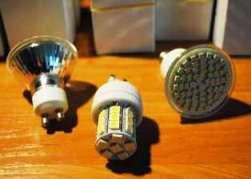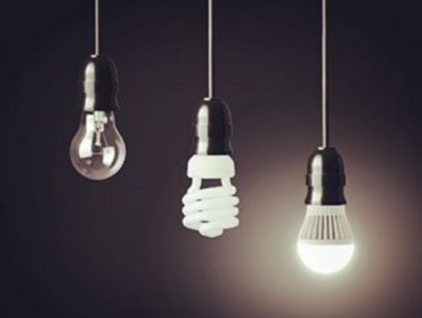Categories: Featured Articles » Sources of light
Number of views: 275,540
Comments on the article: 21
LED home lights: is it worth using?
Theoretical calculations and practical comparisons of various light sources, the use of LED lamps.
 The issue of energy saving is still one of the first places in the family budget. This is due to the constant increase in tariffs. Recall that since the days of the USSR, prices have increased 20 times and are not going to stop. One of the areas of economy is the economy of lighting. And here some progress has been outlined.
The issue of energy saving is still one of the first places in the family budget. This is due to the constant increase in tariffs. Recall that since the days of the USSR, prices have increased 20 times and are not going to stop. One of the areas of economy is the economy of lighting. And here some progress has been outlined.
News related to lower prices LED lamp. Now these devices can be bought at a price of less than 300 rubles apiece, i.e. they came close in price to energy-saving fluorescent lamps that became popular among the people. Here are some examples: 2.1 W lamp GLOBE-LED21 E27 white 196 rub; 3W -374 rubles; 8 W-809 rub.

Compare different light sources.
In order to understand what LED lamps can and cannot do, you need to compare how much light different types of lamps give out per watt of energy consumed, i.e. light output. The reference point for us will be incandescent lampas the most famous reference. In general, the theoretical light output limit of LED lamps is 300 lm / W and 40% efficiency. Now the best ones give 100 lm / W and 15% efficiency.
Incandescent lamp give out 10-19 lm / W; luminescent (energy-saving) 60 - 100 lm / W; LED 6.5-100 lm / W. Thus, we all know the cheap vacuum incandescent lamps, with a power of 40, 60 and 100 W, produce about 400, 600 and 1000 lm. This, of course, is averaged data. That energy-saving lamps have the same light output or higher, and the price is lower than LED lamps, makes you think about the advisability of using LEDs.
Check the data using the instruments.
For example, now a good energy-saving lamp with a power of up to 20 watts. can be bought at retail for the price of 100 rubles. Let me remind you that such a lamp will correspond to an incandescent lamp of 100 watts. Here is a comparative table of measured indicators of real incandescent lamps, LED and energy-saving. I do not indicate the name, so as not to be considered advertising.
For power lamps 40 watts
For 60W lamps.
For 100 W lamps.
Disappointing conclusions
 The tables below show that at the most common home capacities, LED lamps lose energy-saving in all respects. If we talk about payback, then due to electricity prices, they will pay off in 15 -17 years. In Russia, this is absolutely unacceptable, because during this time, cheaper and more economical light sources will appear, many buyers simply will not live so much.
The tables below show that at the most common home capacities, LED lamps lose energy-saving in all respects. If we talk about payback, then due to electricity prices, they will pay off in 15 -17 years. In Russia, this is absolutely unacceptable, because during this time, cheaper and more economical light sources will appear, many buyers simply will not live so much.
In addition, LED lamps have LED crystal degradation effect. They fail much earlier than the declared deadline. Therefore, at the moment you can recommend the use of only cheap LED lamps and only for local lighting. For example, as a night lamp, a flashlight, a lamp in the kitchen. And that is a matter of taste.
In order to become truly massive, LED lamps must become 10 times cheaper. For example, a lamp in a suspended ceiling complete with fluorescent lamps costs from 800 rubles, and with LED from 3000 to 6500 rubles.
New studies (for 2016): Comparison of power and light output of various types of lamps
Interesting offers
If you want to do business in buying and selling light sources, then look at the information on Chinese Internet sites. China produces hundreds of millions of such lamps per year.
If you live in Moscow, then a large assortment of LEDs, lamps and lamps can be found on the radio market in Mitino. This is convenient because You can see the products in action without buying them and get expert advice from sellers.
Another area of application of LEDs is LED running lights and instrument lighting in cars. There are a lot of such devices, too, of any size and for any car model. There are, for example, led strip, with their help, you can decorate your car, like a Christmas tree. Tapes differ in color, number of LEDs and the presence or absence microcontroller. If you are a fan, then you have all the materials for creativity. All in your hands.
By the way, the tapes are equipped with strips of double-sided tape. They can be easily glued both inside and out. Such decor is interesting in the house as an additional highlight. Come up with more ways to use LEDs and write to us. Good luck!
11.03.2012
See also: Technical Parameters of LED Bulbs
See also at bgv.electricianexp.com
:
